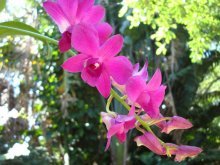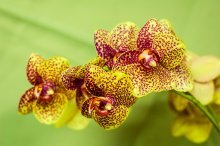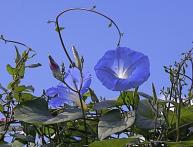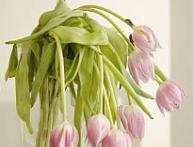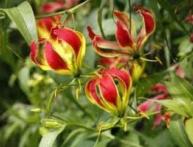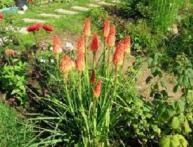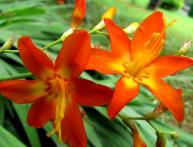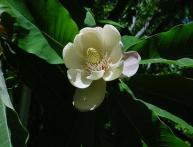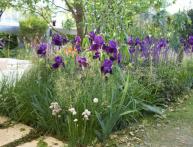Variety of orchids dendrobium: description of the plant and growing conditions
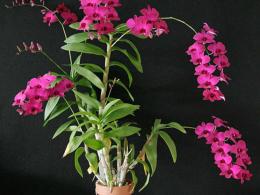
Among gardeners, the dendrobium orchid is very popular due to its varied colors. There are different types of dendrobiums, differing in color. At home, with good care, you can easily grow This is a beautiful flowering plant.
Content:
Dendrobium orchid: description
Dendrobium orchids are perennial plants of the Orchidaceae family. In nature, this plant grows in tropical forests. It refers to epiphytes and lithophytes, i.e. grows on trees and rocks. There are many hybrid forms of dendrobium orchids that are successfully grown at home: Nobile, Parisha, King, Lindley, etc. The shoots of the plant are erect, and the leaves are elliptical in shape.
The length of the pseudobulb reaches about 1.5 meters in 2-4 years. Then it becomes bare and dies, while producing daughter rosettes. In the axils of the leaves, the rudiments of inflorescences are formed, which can be used to propagate dendrobium.
The flowers are in the form of racemose inflorescences, on which from 5 to 20 corollas open. Their diameter is about 4-8 cm. They can be painted in different colors, depending on varieties. The shade can be white, pale lemon, lilac, violet, golden orange, etc.There are dendrobiums with two and three-color petals.
Growing conditions
Dendrobium is a light-loving plant, so it should be placed on the southwest or southeast side. In summer, it is recommended to place the plant on a balcony or loggia. In autumn and winter, the orchid needs additional lighting, so you will have to use phytolamps.
If the leaves are exposed to sunlight, this can lead to burns. As a result, the leaves will turn light green. If there is a lack of sunlight, they will begin to turn yellow. The orchid feels good at a temperature of 19-25 degrees. If the temperature is above 29 degrees, then this disrupts the normal development of the plant.
In the autumn-winter period, the air temperature should be about 14-20 degrees. At night the temperature should not drop below 10 degrees. The optimal humidity in the room is 60%. In summer it is recommended to spray more often orchid, but the drops should not fall on the buds.
Planting an orchid
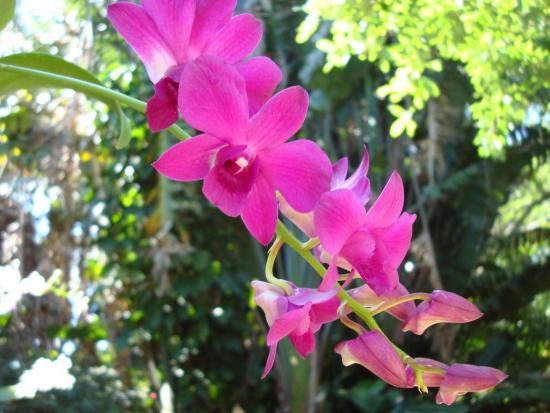
If the orchid has a healthy appearance when planted and there are no signs of disease, then replanting should be done after flowering in a permanent pot. The container should have several drainage holes. A pot for the plant should be chosen that is stable to avoid tipping over.
The necessary soil can be purchased in special stores. The substrate for orchids is significantly different from the soil intended for ordinary indoor plants. The soil for dendrobium orchids consists of pine bark, moss, peat chips, birch charcoal, etc.
All these components are quite difficult to prepare on your own, so it is better to purchase them at a specialized store.It is recommended to add activated carbon powder to the soil immediately before planting. This will prevent rotting. In addition, the purchased mixture must be disinfected and treated with steam.
Once prepared priming, you can start replanting the orchid. Carefully remove the plant from the pot, clean the roots and carefully examine it. If there are rotten or dried areas, they should be carefully cut off and these areas should be sprinkled with colloidal sulfur and crushed chalk. Leave the “wounds” to dry for 2-3 hours.
Video about the proper cultivation of dendrobium orchids:
Next, place the dendrobium in a pot and sprinkle with substrate. Then water the plant moderately and place it in partial shade for a week. During this period, do not water, but only spray the orchid.
Plant care
The orchid is very demanding in care, so it needs to create not only optimal conditions, but also proper care. When the plant grows green mass and root system, it needs to be watered abundantly. In this case, it is necessary to ensure that the earthen ball dries out completely each time, and only then water the plant.
Watering is carried out in the following way: the pot with the orchid is immersed in water for 4-5 minutes. In winter, watering is reduced as the plant is dormant. Dendrobium is fed as soon as flower buds begin to form.
Finish fertilizing until new shoots develop. For this purpose, special feeding, intended for orchids. Fertilizers can be applied from spring until the end of autumn. In this case, the fertilizer must be diluted with water.
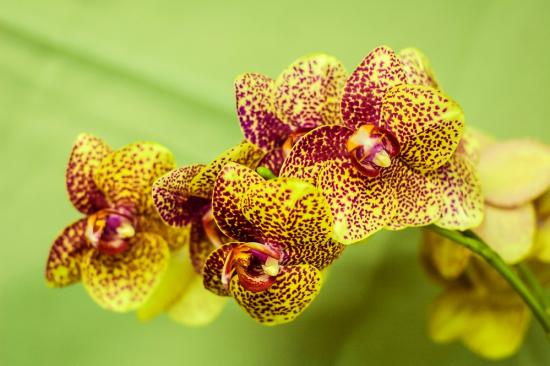
To maintain optimal humidity, you can not only spray the plant, but also simply place a container of water next to the pot. If you follow these simple recommendations for caring for dendrobium, the plant will delight you with its amazing flowers.

